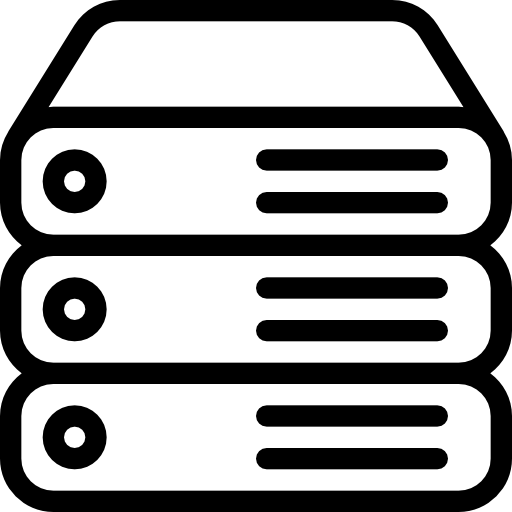The best professional commands for Windows
Windows is a powerful operating system that offers many features and functionalities to its users. However, sometimes the graphical user interface (GUI) is not enough to perform certain tasks or access hidden settings. That’s when the command line interface (CLI) comes in handy.

The CLI, also known as the command prompt or terminal, is a text-based interface that allows you to interact with the operating system by typing commands. You can use the CLI to perform a variety of operations, such as managing files and folders, troubleshooting problems, configuring network settings, installing and uninstalling programs, and more.
In this blog post, we will present some of the best professional commands for Windows that can help you improve your productivity and efficiency. These commands are useful for both beginners and advanced users who want to master the CLI and take advantage of its full potential.
Note: To open the CLI in Windows, you can press Windows + R and type cmd in the Run dialog box, or you can search for cmd in the Start menu. Alternatively, you can use PowerShell, which is a more advanced and versatile CLI that supports scripting and automation. To open PowerShell, you can press Windows + X and select Windows PowerShell from the menu, or you can search for PowerShell in the Start menu.
These are some of the best professional commands for Windows:
1. ipconfig: This command displays information about your network configuration, such as your IP address, subnet mask, default gateway, DNS servers and more. You can also use ipconfig with various switches to perform different actions, such as releasing and renewing your IP address (ipconfig /release and ipconfig /renew), clearing your DNS cache (ipconfig /flushdns) or displaying detailed information about all your network adapters. (ipconfig / all).
2. ping: This command tests the connectivity between your computer and another device or website on the network. It sends a series of packets to the specified destination and measures the time it takes to send and receive them. You can use ping to check if a device or website is online, measure network latency, or troubleshoot network problems. You can also use ping with various modifiers to customize the test, such as specifying the number of packets to send (ping -n), setting a timeout value (ping -w) or using IPv6 instead of IPv4 (ping -6).
3. tracert: This command traces the path a packet takes from your computer to a destination on the network. It shows you all the intermediate devices (routers, switches, firewalls, etc.) that the packet passes through and how long each hop takes. You can use tracert to diagnose network problems, such as slow connections, packet loss or routing errors. You can also use tracert with various modifiers to modify the test, such as specifying the maximum number of hops (tracert -h), using IPv6 instead of IPv4 (tracert -6), or displaying host names instead of IP addresses (tracert -d).
4. netstat: This command displays information about your active network connections, such as the protocol used, local and remote addresses and ports, and the status of the connection. You can use netstat to monitor your network activity, identify suspicious connections or find out which programs are using your network resources. You can also use netstat with various modifiers to filter or sort the output, such as displaying only listening ports (netstat -a), displaying the process ID associated with each connection (netstat -o), or displaying per-protocol statistics (netstat -s ).
5. task list: This command lists all the processes running on your computer, along with their process ID, session name, session number and memory usage. You can use the task list to see what programs are running on your system, how many resources they consume, or to find out the process ID of a specific program. You can also use the task list with various modifiers to filter or format the output, such as displaying only processes of a specific user (task list /u), displaying processes in a tree structure (task list /v) or saving the output to a file (task list /fo csv > filename.csv).

6. taskkill: This command terminates one or more processes by their process ID or image name. You can use taskkill to stop a program that is unresponsive, consumes too many resources or causes problems on your system. You can also use taskkill with various modifiers to force or confirm termination, such as killing all processes with a specific image name (taskkill /im), killing all processes of a specific user (taskkill /u) or killing all processes that have a window title containing a specific string (taskkill /fi «windowtitle eq *string*»).
7. sfc: This command scans and repairs damaged or missing system files. You can use sfc to fix errors, improve performance, or restore the functionality of your system. You can also use sfc with various modifiers to specify the scanning mode, such as verifyonly (sfc /verifyonly), scan and repair (sfc /scannow), or scan a specific file (sfc /scanfile).
8. chkdsk: This command checks and repairs disk errors on your hard disk or external storage device. You can use chkdsk to prevent data loss, improve disk performance or reclaim disk space. You can also use chkdsk with various modifiers to modify the scanning mode, such as fix errors (chkdsk /f), recover bad sectors (chkdsk /r) or verify alone (chkdsk /c).
9. robocopy: This command copies files and folders from one location to another, with options to preserve attributes, permissions, timestamps and more. You can use robocopy to back up your data, synchronize your files, or migrate your data to a new device. You can also use robocopy with various modifiers to customize the copy operation, such as copying only newer files (robocopy /xo), copying only files that have changed (robocopy /m) or copying subdirectories, including empty ones (robocopy /e ).
10. shutdown: This command shuts down or restarts your computer, with options to log off, hibernate or suspend. You can use shutdown to shut down your system, schedule a shutdown or reboot, or remotely shut down another computer on the network. You can also use shutdown with various modifiers to specify the shutdown action, time, reason or message, such as shutdown after 10 minutes (shutdown /s /t 600), reboot and install updates (shutdown /r /u). You can also shutdown another computer by name (shutdown /m /m /computername).
These are some of the best professional commands for Windows that can help you perform various tasks and optimize your system. Of course, there are many more commands that you can explore and learn using the help button (/?) or by searching online. The CLI is a powerful tool that can make your work easier and faster if you know how to use it correctly.


